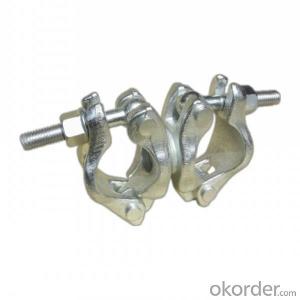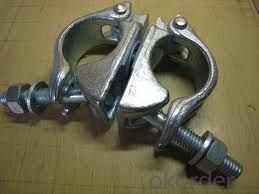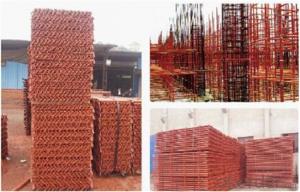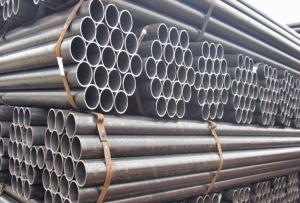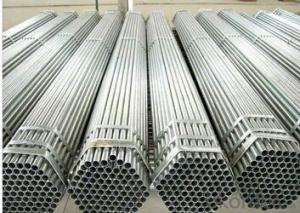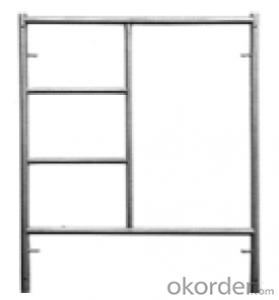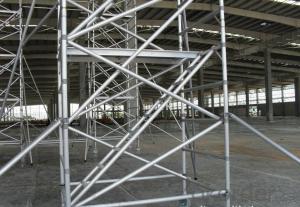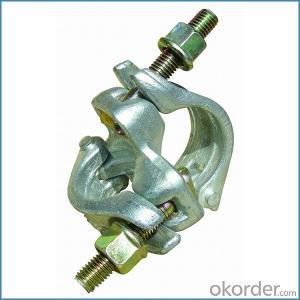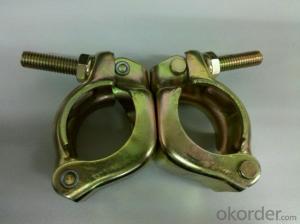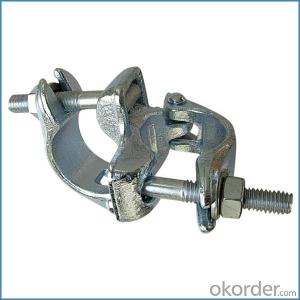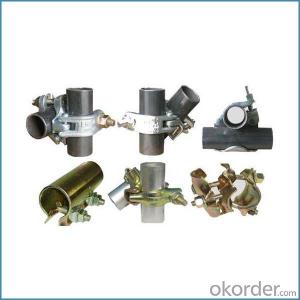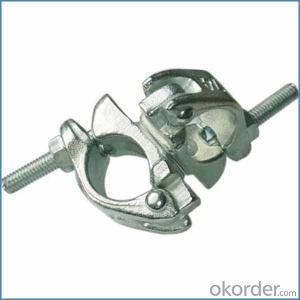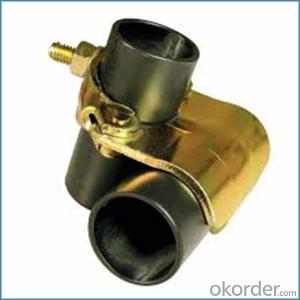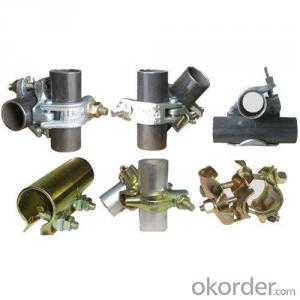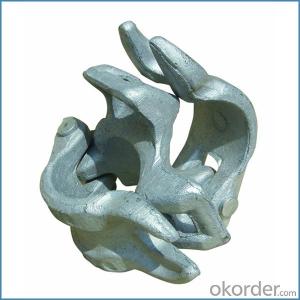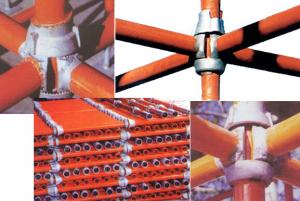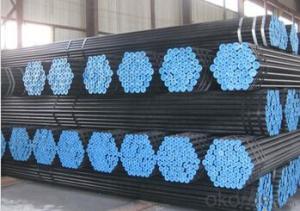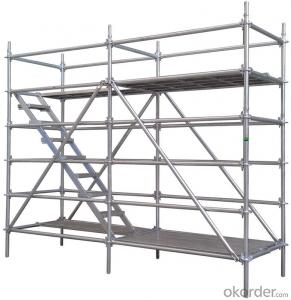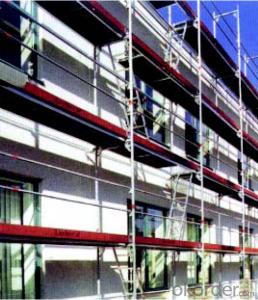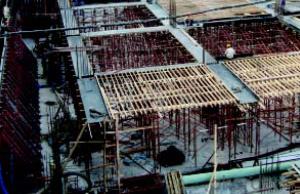Scaffolding Joint Clamp british German Forged Type
- Loading Port:
- Tianjin
- Payment Terms:
- TT OR LC
- Min Order Qty:
- 1000 kg
- Supply Capability:
- 100000 kg/month
OKorder Service Pledge
OKorder Financial Service
You Might Also Like
Scaffolding Joint Clamp british German Forged Type
Description
1.The scaffolding coupler is always used to connect the steel pipe as scaffolding system.
2.The often used coupler is swivel coupler and righ angle coupler .
3.We can provide types of scaffolding coupler according to your requirement.
4.Couoler can fix the 48.3mm scaffolding steel pipe tightly and make the whole scaffolding system more steadily.
Feature
(1)Excellent Anti-Breaking—Cold Pressed Steel
(2)Outstanding Resistance Deformation
(3)Strong Anti-Dropping Ability
Photo
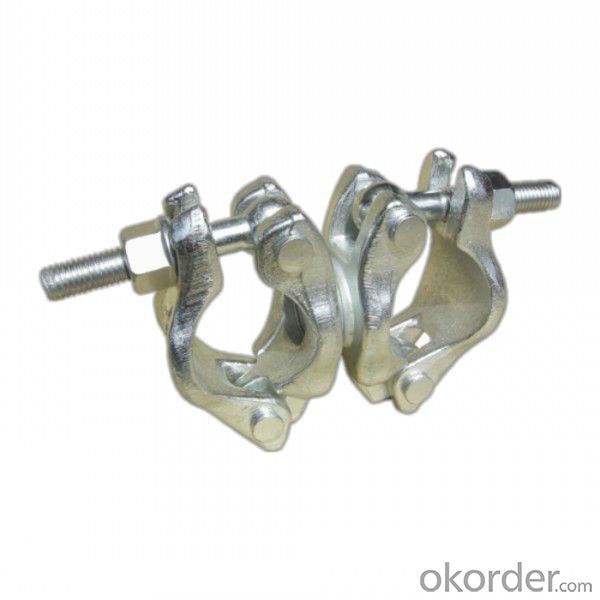
Parameter
| Material | Q235,345steel |
| Size | 48.3mm*48.3mm |
| Surface finish | Galvanized |
| Weight | 1.1kg around |
| Standard | BS1139,EN74 |
| Package | 25pcs/bag,steel pallet |
| Manufacture | As per customer requirement |
| Market | Africa, South America, the Middle East and Asia |
FAQ
Q: Are you a factory or trading company?
We are a state-owned corporation in China,dealing with various kinds of building materials.We have our holding subsidiaries.
Q: Where is your factory located? How can I visit there?
Our factory is located all around China.
Q: Can I get some samples?
Sample is free, customer only pay freight for the first time.
Q: Delivery?
10-30days. (5-15 containers)
Any question,feel free to contact us.
- Q: Are steel tube couplers compatible with different types of scaffolding stairs or access systems?
- Yes, steel tube couplers are compatible with different types of scaffolding stairs or access systems. These couplers are designed to securely connect and join steel tubes, allowing for versatile and flexible configurations in scaffolding structures. They can be used with various types of stairs or access systems, ensuring compatibility and stability in different scaffolding applications.
- Q: What are the load capacities of different types of steel tube couplers?
- The load capacities of different steel tube couplers can differ based on their design, size, and material composition. However, it is important to note that manufacturers typically provide load capacities for each individual product. Steel tube couplers are generally designed to create a secure and dependable connection between steel tubes in various applications like scaffolding, construction, and engineering projects. These couplers are commonly used to join tubes together and form a stable and load-bearing structure. Manufacturers determine the load capacities of steel tube couplers through thorough testing and analysis. This capacity is usually expressed as the maximum load that the coupler can safely handle without failure or deformation. The load capacity can be specified as either a maximum allowable load or a maximum allowable torque. The specific load capacities of steel tube couplers can vary based on factors like the type of coupler, its size, and the material it is made from. For example, couplers made from higher-grade steel alloys may have higher load capacities compared to those made from lower-grade materials. To determine the load capacity of a particular steel tube coupler, it is recommended to refer to the manufacturer's specifications or consult with a structural engineer or technical expert. These professionals can provide accurate and reliable information on load capacities based on the specific requirements and conditions of the project or application.
- Q: Are there any specific guidelines for the proper installation and tightening of steel tube couplers?
- There exist specific guidelines for the correct installation and tightening of steel tube couplers. To guarantee a secure and dependable connection, adherence to the following instructions is necessary: 1. Tube end cleaning and preparation: Prior to coupler installation, it is imperative to ensure that the tube ends are clean, devoid of any dirt, debris, or rust. Employ a wire brush or emery cloth to eliminate surface contaminants. 2. Measurement and marking of insertion depth: Measure and mark the desired insertion depth on the tube. This will ensure proper seating of the couplers within the tube and provide adequate support. 3. Application of lubricant: Apply a suitable lubricant to the interior of the coupler and the exterior of the tube ends. This will facilitate easier insertion and prevent galling or seizing during tightening. 4. Coupler insertion: Align the couplers with the tube ends and insert them by applying consistent and uniform pressure. Avoid excessive force or striking the couplers, as this may damage the threads or distort the coupler itself. 5. Hand tightening: Once the couplers are completely inserted, hand tighten them until snug. It is crucial not to overtighten at this stage, as it can lead to deformation or thread damage. 6. Usage of a torque wrench: Utilize a calibrated torque wrench to achieve the appropriate tightening torque. Consult the manufacturer's specifications or guidelines to determine the recommended torque value for the specific coupler size and type. 7. Cross-pattern tightening: When tightening multiple couplers, follow a cross-pattern sequence. This ensures equal distribution of tightening forces and prevents distortion or misalignment of the couplers. 8. Proper alignment inspection: After tightening, visually inspect the couplers to ensure proper alignment and seating within the tube ends. Misalignment may indicate insufficient tightening or improper installation. 9. Conduct a pull test: To confirm the connection's integrity, perform a pull test using suitable equipment. This test should adhere to industry standards or specific project requirements. 10. Documentation and record-keeping: Maintain a record of the installation process, including torque values used, inspection results, and any additional notes. This documentation can serve as a future reference or for quality control purposes. Adhering to these guidelines will help ensure a safe and secure installation of steel tube couplers, minimizing the risk of failure and providing a reliable connection for various applications. It is always recommended to consult the manufacturer's instructions and seek professional advice if uncertain.
- Q: Do steel tube couplers have any limitations in terms of tube diameter or thickness?
- There are limitations to steel tube couplers when it comes to tube diameter and thickness. The range of tube sizes that can be connected using the coupler depends on its size and specifications. Steel tube couplers are typically designed to accommodate specific tube diameters and thicknesses. The design and construction of the coupler are based on its intended application and the loads it will handle. If a tube's diameter or thickness exceeds the coupler's specifications, it may not fit properly or compromise the connection's structural integrity. To ensure the chosen steel tube coupler is suitable for the specific tube diameter and thickness, it is important to refer to the manufacturer's specifications and guidelines. Professional engineering advice may also be necessary to determine the appropriate coupler size and compatibility with the desired tube dimensions.
- Q: How do steel tube couplers compare to other types of scaffolding connectors in terms of durability?
- Steel tube couplers are known for their exceptional durability compared to other types of scaffolding connectors. They are designed to withstand heavy loads, harsh weather conditions, and repetitive use without compromising their structural integrity. This durability ensures a longer lifespan for the scaffolding system, reducing the need for frequent replacements and repairs. Additionally, steel tube couplers offer a secure and reliable connection, minimizing the risk of accidents or scaffold failure. Overall, their robust construction and resilience make them a preferred choice for scaffolding projects that require high levels of durability.
- Q: What are the typical dimensions of steel tube couplers used in scaffolding?
- The typical dimensions of steel tube couplers used in scaffolding vary depending on the specific type and design of the coupler. However, the most commonly used steel tube couplers in scaffolding are usually around 48.3mm in diameter. This diameter is widely used and accepted as the standard size for scaffolding tubes and couplers in many countries around the world. Additionally, the length of the steel tube couplers can vary, but they are often around 40-50mm in length. These dimensions ensure a secure and reliable connection between scaffolding tubes, ensuring the stability and safety of the scaffolding structure.
- Q: Bowl button scaffolding in the bowl buckle joints of what components
- XPS board is extruded board, you say which one is good .... you think EPS insulation board, right?
- Q: Are steel tube couplers adjustable for different angles or slopes in scaffolding projects?
- Yes, steel tube couplers are adjustable for different angles or slopes in scaffolding projects. These couplers are designed to provide a secure connection between scaffold tubes, allowing for flexibility in creating various configurations and adapting to different angles or slopes. The adjustable nature of these couplers ensures that scaffolding structures can be set up on uneven terrain or to accommodate specific project requirements. By using these adjustable couplers, scaffolding can be safely erected on slopes, inclines, or at different angles, providing a stable and secure platform for workers.
- Q: Can steel tube couplers be used for both straight and curved scaffolding designs?
- Yes, steel tube couplers can be used for both straight and curved scaffolding designs.
- Q: Do steel tube couplers require any specific training for installation and usage?
- Installation and usage of steel tube couplers necessitate specific training. Although they may appear easy to use, it is crucial to receive proper training to guarantee accurate installation and safe utilization. To comprehend the appropriate procedures for installing steel tube couplers, including alignment, tightening, and torque requirements, training is imperative. Incorrect installation may result in coupler failure or inadequate performance, posing a safety hazard. Furthermore, training is essential to grasp the limitations and load capacities of steel tube couplers. They are engineered to withstand specific loads, and surpassing these limits can lead to structural malfunction. Adequate training will provide the knowledge required to select the suitable size and type of coupler for a given application. Moreover, training will encompass inspection and maintenance prerequisites for steel tube couplers. Regular inspections are critical to identify any indications of wear, damage, or corrosion that could compromise the integrity of the couplers. Proper maintenance, including lubrication and cleaning, will extend the lifespan of the couplers and ensure their continued performance. In conclusion, even though steel tube couplers may seem uncomplicated, specific training is necessary for correct installation and usage. Investing in proper training will guarantee the secure installation, correct utilization, and appropriate maintenance of the couplers, ultimately minimizing the risk of accidents and maximizing their performance and longevity.
Send your message to us
Scaffolding Joint Clamp british German Forged Type
- Loading Port:
- Tianjin
- Payment Terms:
- TT OR LC
- Min Order Qty:
- 1000 kg
- Supply Capability:
- 100000 kg/month
OKorder Service Pledge
OKorder Financial Service
Similar products
Hot products
Hot Searches
Related keywords
